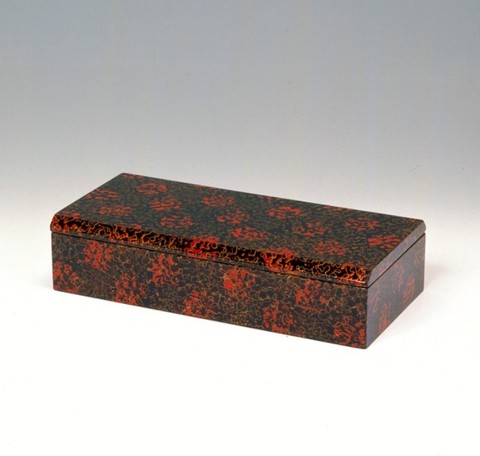
津軽塗の始まりは、江戸時代初期に遡り、津軽藩の藩主にめしかかえられた、漆器作りの職人が始めたと伝えられています。
津軽塗が産業として形を整えたのは、明治時代初頭で、江戸時代に積み重ねられた伝統技術を土台にして発展しました。その後も多くの工人たちが創意工夫を凝らし、技術を磨き、今日の津軽塗を築き上げました。

The making of this ware dates back to the beginning of the 17th century, when the fourth generation of leaders of the Tsugaru clan engaged craftsmen skilled in the making of lacquer ware. A production center became established toward the end of the 19th century and the craft developed from the traditional skills which had been acquired over the preceding period of approximately 300 years. The continual process of refinement of techniques and the original ideas developed by the many craftsmen and women since then, are the sum total of the craft today.
Centered on Hirosaki in Aomori Prefecture, no other traditional forms of lacquer ware are produced any further north in Japan. Inevitably there is a warmth and charm about this craft that is missing from a machine made product. A number of distinctive techniques are used. The one called nanako-nuri has the stylish feel of the kind of fine patterns found on some kimono cloths, whereas monsha-nuri has an elegant modern feel with its mat black ground. With 31 government recognized Master Craftsmen among the 643 employed, there are now 173 firms engaged in the making of this fine craft lacquer ware. They produce pieces of furniture including tables, various pieces of tableware as well as fine pieces to be used in the tea ceremony. Trays and chopsticks are as finely produced as any other item and flower vases, too, glow with the fine traditions of this craft.